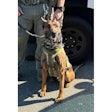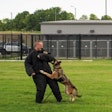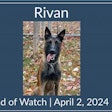The tactical teams portrayed in the movies and on television typically use an assortment of automatic weapons and high-powered rifles to shoot down terrorists and hostage takers. But those of us in the business know that the vast majority of our missions do not involve the use of deadly force. In fact, many incidents require no force at all. When force is used, it's most commonly non-lethal force. Whether through the use of control holds, strikes, kicks, or some type of non-lethal weapon, most SWAT incidents are resolved with the bad guy requiring little more than an EMS assessment before his ride to jail.
The application of deadly force is a pretty straightforward process. Even though there are a variety of types of firearms, they all achieve their goal pretty much the same way. The same cannot be said of non-lethal force.
There are a variety of methods by which non-lethal weapons operate. Launchable impact munitions utilize blunt trauma to inflict pain and some level of injury to discourage a person from continuing his dangerous behavior. Chemical agents rely on a pain response to cause a subject's eyes to shut and a panic or submissive response to perceived respiratory distress. Both of these systems come in a variety of forms and have been used successfully for years.
The relative newcomer to SWAT's non-lethal arsenal is the TASER. These handheld electronic control devices (ECD) do not rely on pain for effectiveness. They operate by causing neuro-muscular incapacitation (NMI). This results in a subject's loss of motor functions and usually ends up with the suspect lying helplessly on the ground.
Originally viewed as a patrol weapon, TASERs have been adopted by plainclothes officers, motors, K-9 units, mounted units, marine units, corrections, and tactical teams. Let's focus on how these devices can be advantageous to a SWAT team and how several teams around the country are deploying them.
Non-Compliant Subjects
One of the greatest challenges facing tactical teams is dealing with non-compliant subjects during a high-risk entry. Once entry is initiated, it is important that the momentum and progress of the team not be stalled by subjects attempting to delay them. Any delays can allow subjects to access weapons or to destroy evidence. The unarmed subject blocking a hallway or doorway presents an immediate threat that needs to be dealt with quickly.
Too often this situation has led to a complete stop of the team's movement while officers shout at a subject to get down from a distance of several feet. Subjects often are very slow to respond or don't respond at all, knowing that the officers cannot use their firearms since the subject is not a threat.
Another tactic that has been deployed is to physically confront and move the subject. This is extremely risky and should be avoided when possible. You do not want to get in a struggle with a subject when you are holding a long gun and are carrying up to 35 pounds of equipment and are decidedly top heavy. This tactic, even when successful, usually takes two officers out of the stack (control officer and cover officer) for the remainder of the operation. Let's look at some alternatives involving non-lethal weapons.
Non-Lethal Indoor Options
Chemical sprays can be effective, but they must be accessed and often take several seconds to be effective. This delay coupled with the considerable problem of cross-contamination in an enclosed and crowded environment has caused several teams to shy away from chemical sprays in these situations. Launchable impact weapons usually have a minimum safe deployment distance that precludes their use in many indoor situations. Additionally, they are almost all shoulder-mounted weapons that require two hands to operate. This precludes an officer from being able to deploy a long gun, a sitution that is less than desirable on this type of mission.
The TASER is ideal for this type of situation. Its relatively small size makes it easy to carry either in a thigh holster or on a vest. This makes it practical for every member to carry an ECD, thus eliminating the need to wait and call up a designated non-lethal operator.
TASERs are also safe to use from point-blank range out to 35 feet, which makes them particularly useful indoors. Also, the TASER is target specific with no cross-contamination issues. And it is very effective.
If an officer encounters a subject who is unarmed, uncooperative, and blocking the team's movement, he can quickly index his long gun, transition to the TASER, and put the subject down. He can keep the TASER cycle going until the team is safely past or until the subject is restrained. A single officer can safely and easily control a subject who has two probes in him. If the subject resumes his aggressive behavior, a simple trigger pull will start another five-second cycle. This can go on until the entry is completed and the building is secured, or until a custody team can take control of the subject.
Let's also not forget the deterrent value of an ECD. TASERs are the most recognizable and the most feared non-lethal weapons on the streets. Bad guys know all about them and what they can do. I have encountered several aggressive suspects during entries who hit the ground faster than I could flip up the safety of my X26 once they saw that yellow TASER come out. Strangely, these same suspects displayed no fear of the automatic weapons that were pointed at them.
Weapon-Mounted TASERs
Another option that makes the transition from deadly force to TASER even faster when you have to deal with a non-compliant subject is the
X-Rail mounting system. The X-Rail allows you to mount a TASER X26 directly to the forward hand grips of any weapon with a Picatinny-type rail system. The X26 acts as a forward vertical hand grip and is aimed wherever the firearm is aimed.
When a TASER is mounted on a long gun all you have to do to fire it is simply disengage the safety and pull the trigger. It takes less than a second.
The obvious concern when using a weapon-mounted TASER is weapon confusion and pulling the wrong trigger. Several teams simply refuse to mix lethal and non-lethal force on the same platform. According to Maj. Steve Ijames, recently retired from the Springfield (Mo.) Police Department, this can be effectively addressed in training. The Springfield SWAT team has used the X-Rail system for some time now and has been able to avoid the use of deadly force at least once because of it.
X-Rail-mounted X26s equipped with TASER CAMs also provide a team with weapon-mounted cameras. The TASER CAM has a built-in infrared illuminator so you can record the incident even in zero-light conditions. There will surely be mixed reactions from operators about having a camera on their weapon recording their every move and word. But as with all other camera systems used by law enforcement, I have no doubt the images recorded by the TASER CAM would in the end be advantageous to the team in justifying their use, or non-use, of force. If nothing else, think of the enormous training value the TASER CAM videos would provide.
One very effective use of the X-Rail is to mount it to a dedicated non-lethal shotgun. This prevents any confusion over lethal and non-lethal weapons, and it gives the operator an effective set of non-lethal tools that can be safely used from point-blank range out to the maximum range of the impact rounds loaded in the shotgun.
When the TASER eXtended Range Electronic Projectile (XREP) becomes available in 2008, the non-lethal shotgun mounted with an X26 on an X-Rail can be used to achieve NMI from 0 to 60 feet. The XREP can be used to deliver NMI and to drop a subject who is beyond the X26's maximum range and give officers a chance to safely approach the subject while he is incapacitated. Once the team closes to within X26 range, the operator can transition to the X26 to deliver any necessary additional cycles from close range.
Perimeter Control
Another common challenge tactical teams face is subjects exiting and reentering a structure. When teams are authorized to use non-lethal force to prevent the subjects from reentering the structure, the most common tools used to control these subjects are impact munitions.
Whether launched from a 12-gauge shotgun or a 37mm or 40mm launcher, these projectiles are often very successful at knocking the suspect down and they give the operator the greatest standoff distance of any non-lethal option commonly available. However, these weapons are not always effective at putting a subject down and, even when they do, it is usually temporary and requires that the team move up quickly to take control of the suspect or the operator needs to deploy additional rounds. The injury profiles associated with multiple strikes from these weapons can be significant.
TASERs have been used frequently and very successfully to prevent subjects from reentering structures. Once the suspect is incapacitated, they are less likely to get up than they are after being struck by an impact round. And if they do attempt to get up, additional cycles can be used to keep them down without causing additional injuries.
The greatest limitation of the TASER in this situation is its maximum effective range of 35 feet. However, depending on the terrain, the availability of cover, and the suspect's movements, operators often find themselves within 35 feet of the suspect. With armored vehicles becoming more available, these close-in perimeter positions are becoming more common. As mentioned earlier, the maximum range of ECD devices will soon be extended with the introduction of the XREP.
Tactical TASER Training
As with any weapon system, the key to success when using TASERs in a tactical environment is quality training conducted in realistic and stressful scenarios. In addition to the standard TASER operator training that every officer who carries a TASER should receive, tactical officers should train on transitioning from other weapons to the TASER and back. If the X26 is mounted on an X-Rail, the operators should train extensively on threat assessment and being able to reliably employ lethal and non-lethal correctly and consistently under stress.
In addition, officers who carry the XP35 cartridges (see "Tactical TASER Cartridges" on this page) should fire several of these rounds from different distances to show they can consistently deploy them safely and effectively. All team members should train together on how to react when any member of the team deploys a TASER ECD.
TASER ECDs fill a gap that has long existed in the non-lethal weapons arsenal of tactical police units. They are safe, effective, and easy to carry on any mission. Used in conjunction with other non-lethal options and good tactics, TASER devices have saved several subjects from death or serious injury. As we continue to refine our tactics to achieve the most effective use of these weapons and as the manufacturer continues to improve the technology, we can expect TASERs to play an even greater role in SWAT operations.
Tactical TASER Cartridges
I highly recommend that any team that utilizes TASER ECDs consider using XP TASER cartridges exclusively. The XP (eXtra Penetration) cartridges have needles that are approximately .10 inches longer than the standard probes. This little bit of extra length has gone a long way toward preventing clothing disconnects.
The XP cartridges also have longer range than the standard 21-foot TASER duty cartridges. XP cartridges come in both 25-foot and 35-foot lengths. The XP cartridge can provide those needed extra few feet to reach the suspect from your perimeter position.
Note: The angle of the probes in the 35-foot cartridge and their trajectory when launched is different than the other TASER cartridges. This requires some additional training for anyone who deploys them.
Rick Guilbault retired at the rank of sergeant from the Sacramento (Calif.) Police Department with 24 years of experience. He served six years on SPD's full-time SWAT team as an operator and three years as a team leader. He is now vice president of training for TASER International.

















